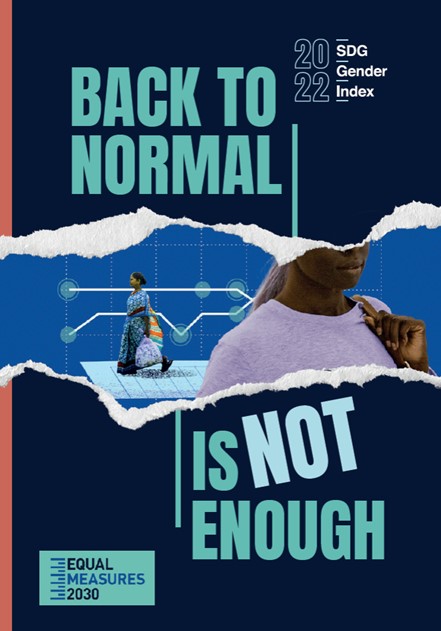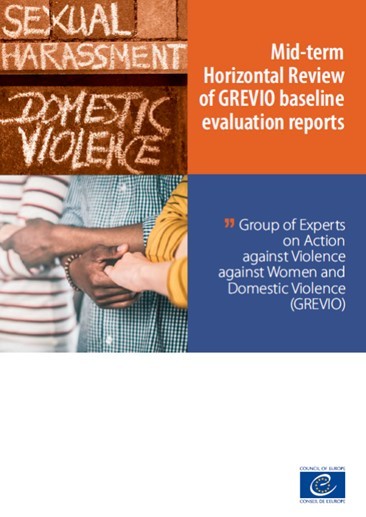Why WHO Needs a Feminist Economic Agenda
Извор: WUNRN – 28.03.2020
The Lancet ~ Volume 395, ISSUE 10229, P1018-1020, March 28, 2020
https://www.thelancet.com/journals/lancet/article/PIIS0140-6736(20)30110-0/fulltext
By Asha Herten-Crabb & Sara E. Davies
In September, 2019, Alan Donnelly and Ilona Kickbusch called for a chief economist at WHO (1)
Such a position, they argued, would enable WHO to better advocate for greater recognition of, and thus action on, the interdependency of health and the economy. We support this proposal: recognition of the interdependence of health and the economy is vital for WHO to achieve its mandate: “the enjoyment of the highest attainable standard of health…without distinction of race, religion, political belief, economic or social condition”. (2)
Given this mandate, WHO should be more ambitious than the appointment of one economist. A more strategic and enlightened approach, especially in the aftermath of the coronavirus disease 2019 (COVID-19) pandemic (3) would be for WHO to embrace and articulate a feminist economic agenda.
A feminist economic agenda interrogates power dynamics and peoples’ relative access to and use of wealth and resources. A feminist economic lens that incorporates intersectionality must address the power dynamics between genders and acknowledge the power relationships between nation states, ethnicities, ages, abilities, and other dimensions of diversity, and how they are interconnected with gender inequality and the economy (4).
A feminist economic approach is consistent with how public health is taught and sometimes practised: that health, and access to health care, is interdependent not only on the economy but also on all other social and commercial determinants of health (5 ,6)
WHO has estimated a shortfall of 18 million health workers by 2030, largely in low-income and middle-income countries. Women comprise more than 70% of the global health workforce, but WHO research into the state of gender equity in the health workforce has revealed systematic gender biases, inequities, and discrimination (7).
A feminist economic approach recognises the systems of disadvantage and discrimination that lead to this inequality. Minority ethnic status, class, education, and sexuality determine who is represented in unpaid community health-care worker roles (8)
The unpaid and low paid labour of women has contributed to profits for private health-care providers and saved the bottom line of health spending in national budgets: capitalism and patriarchy combine to systematically undervalue social reproductive labourie, unpaid care roles as women’s work (9).
Governments’ ability to fund health-care services is dictated by their revenue and fiscal policy space. For the world’s poorest countries, revenue and fiscal space have been largely controlled by the policy advice and loan conditionalities of international financial institutions such as the International Monetary Fund (IMF) and the World Bank. The IMF (10), the World Bank (11), the G7 (12), and the G20 (13) have championed gender equality, while the G7 and G20 have highlighted the necessity of universal health coverage (UHC) and the World Bank aims to support pandemic response through its Pandemic Emergency Financing Facility. Yet the IMF and the World Bank continue to prioritise austerity measures and “private sector first” strategies that systematically undermine the ability of governments to provide public services and achieve UHC. (14, 15).
Neither institution has linked its rhetoric on promotion of gender equality to the development of a systematic approach for evaluating the implications of its austerity policies on gender inequality, health delivery, or outcomes (!6, 17).
The key funders of the IMF and the World Bank, and those that hold the greatest number of Executive Board votes, are G7 and G20 members.
These blocs comprise nations (Canada, France, Sweden, Australia, and the UK) with domestic UHC and feminist or gender-focused development policies, although not without their criticisms (18). These same countries also fund the international financial institutions that promote austerity policies that reduce public spending on health services and wages (14 ,1 5).
The world’s health care is largely delivered by women, but most decision making, including national budgets, lies in the hands of men (7)
Initiatives such as Women in Global Health and Women Leaders in Global Health have raised the importance of increasing the numbers of women in health decision-making roles and institutions. However, undertaking a feminist analysis of health delivery and resourcing is not gender specificmen can be feminists, and not all women will be. A feminist economic approach to health requires that all people at all levels of health-care decision making reorient their notion of wellbeing to include gender equality for women in all their diversities (19).
Feminist knowledge informs what we count as costs and savings: the national income saved from women’s low wages or volunteerism as health-care workers (20): the benefit to national budgets and health outcomes when there are gender-based violence health-care prevention programmes (21); and the negative burdens carried by health-care workers exposed to violence, harassment, and exploitation when their work is located in unregulated environments, including homes, non-governmental organisations, and provincial health clinics (22).
A WHO economic engagement strategy that does not address the social and political determinants of health delivery, resourcing, and decision making risks perpetuating the falsehood that health is a technical enterprise that can be achieved in a silo. Health programmes that ignore gender, race, human rights, capitalism and corporatism, sovereign debt, donor influence, (neo)colonialism, and post-conflict transitions will fail to advocate for the necessary political economic interventions that underpin effective health delivery and outcomes.
The question remains whether a feminist economic agenda led by WHO would hold sway over decision makers in governments, political blocs, and international financial institutions. The answer lies in political momentum and WHO’s knowledge of the social and commercial determinants of health.
As international financial institutions and donor groups like the World Bank and the Organisation for Economic Co-operation and Development embrace gender equality and the UHC agenda, WHO has the opportunity to use its access to these institutions to demonstrate the necessity of a feminist economic approach to build better, more equitable ways to steer sustainable economies that prioritise health and gender equality as mutually inclusive.
Author Affiliations
(a) Department of International Relations, London School of Economics and Political Science, London WC2A 2AB, UK
(b) School of Government and International Relations, Griffith University, Brisbane, QLD, Australia
References
1. Donnelly A., Kickbusch I
Why the WHO needs a chief economist. The Financial Times. Sept 23, 2019;
https://www.ft.com/content/21b5b75c-d923-11e9-8f9b-77216ebe1f17
2.WHO. WHO Constitution. 1946
https://www.who.int/about/who-we-are/constitution
3. Wenham C , Smith J , Morgan R Gender and COVID-19 Working Group.
COVID-19: the gendered impacts of the outbreak. Lancet. 2020; 395: 846-848 https://www.thelancet.com/journals/lancet/article/PIIS0140-6736(20)30526-2/fulltext
4. Crenshaw K. Mapping the margins: intersectionality, identity politics, and violence against women of color. Stanford Law Rev. 1991; 431241
https://psycnet.apa.org/record/2004-20005-010
5. WHO. Social Determinants of Health Series. 2010 https://www.who.int/social_determinants/corner/en/
6. Kickbusch I., Allen L., Franz C. The commercial determinants of health. Lancet Glob Health. 2016; 4: e895-e896
https://www.thelancet.com/journals/langlo/article/PIIS2214-109X(16)302
17-0/fulltext
7. Manzoor M., and Thompson K. Delivered by women, led by men: a gender and equity analysis of the global health and social workforce.
World Health Organization, Geneva2019
https://www.who.int/hrh/resources/health-observer24/en/
8. Morgan R., Ayiasi R. M., Barman D., et al. Gendered health systems:
evidence from low- and middle-income countries. Health Res Policy Syst. 2018; 16: 58
https://health-policy-systems.biomedcentral.com/articles/10.1186/s12961-018-0338-5
9. Arruzza C., Bhattacharya T., and Fraser N. Feminism for the 99%: a manifesto. Verso Books, London,2019
https://www.versobooks.com/books/2924-feminism-for-the-99
10. International Monetary Fund. 5 things you need to know about the IMF and gender. 2017 https://blogs.imf.org/2017/11/22/5-things-you-need-to-know-about-the-imf-and-gender/
11. World Bank Group. World Bank Group Gender Strategy (FY16-23):
gender equality, poverty reduction, and inclusive growth. .World Bank Group, Washington, DC2015 http://documents.worldbank.org/curated/en/820851467992505410/World-Bank-Group-gender-strategy-FY16-23-gender-equality-poverty-reduction-and-inclusive-growth
12. Government of France. Making gender equality a major global cause. 2019 https://www.gouvernement.fr/en/making-gender-equality-a-major-global-cause
13. G202014 G20 Brisbane Commitments. 2014 http://www.g20.utoronto.ca/analysis/commitments-14-brisbane.html
14. Ruckert A., Labonté R. and Parker R. H .Global healthcare policy and the austerity agenda. in: Kuhlmann E Blank R Bourgeault I Wendt C The Palgrave international handbook of healthcare policy and governance. Palgrave Macmillan, London2015: 37-53
https://www.palgrave.com/gp/book/9781137384928
15. Forster T., Kentikelenis A. E., Stubbs T. H. and King L.P.
Globalization and health equity: the impact of structural adjustment programs on developing countries.
Soc Sci Med. 2019; (published online Aug 19.)
https://www.sciencedirect.com/science/article/pii/S0277953619304897
16. Hopkins E. The World Bank and gender equality. Bretton Woods Project, London, UK2019 https://www.brettonwoodsproject.org/2019/08/the-world-bank-and-gender-equality-development-policy-financing/
17. Bürgisser E. The IMF and gender equality: operationalising change.
Bretton Woods Project, London, UK2019
https://www.brettonwoodsproject.org/wp-content/uploads/2019/02/Operationalising-Change.pdf
18. Irwin R.E. Lessons from Sweden’s feminist foreign policy for global health. Lancet. 2019; 393: e27-e28 https://www.thelancet.com/journals/lancet/article/PIIS0140-6736(19)30209-0/fulltext
19. UN Beijing Declaration and Platform for Action, adopted at the Fourth World Conference on Women. 1995.
https://www.un.org/en/events/pastevents/pdfs/Beijing_Declaration_and_Platform_for_Action.pdf
20. Goddard M. How women contribute $3 trillion to global healthcare.
The Conversation. June 8, 2015;
http://theconversation.com/how-women-contribute-3-trillion-to-global-healthcare-42912
21. García-Moreno C., Zimmerman C., Morris-Gehring A., et al.
Addressing violence against women: a call to action. Lancet. 2015;
385: 1685-1695
https://www.thelancet.com/journals/lancet/article/PIIS0140-6736(14)61830-4/fulltext
22. Steege R., Taegtmeyer M., McCollum R. et al.
How do gender relations affect the working lives of close to community health service providers? Empirical research, a review and conceptual framework. Soc Sci Med. 2018; 209: 1-13
https://www.sciencedirect.com/science/article/pii/S0277953618302375



